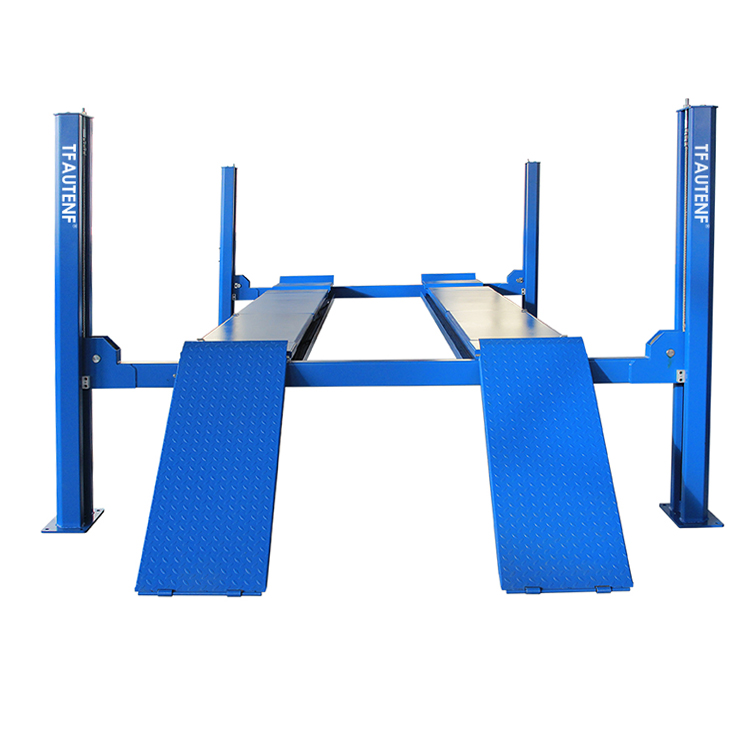
As a core piece of equipment in automotive repair shops, four-post car lifts inevitably develop various malfunctions during prolonged use. This article provides systematic troubleshooting methods and solutions for the most common issues—abnormal noises and asynchronous lifting.
Possible Causes:
Insufficient rail lubrication
Worn sliders
Solutions:
Clean guide rails and apply specialized lubricating grease.
Check slider wear—replace if exceeding 3mm.
Possible Causes:
Low or contaminated hydraulic oil
Air trapped in the oil pump
Solutions:
Top up with ISO VG46 hydraulic oil to the standard level.
Bleed air from the system (use the pump’s bleed valve).
Troubleshooting Steps:
Check chain tension on the lagging side (standard: 10–15mm deflection).
Measure hydraulic cylinder pressure (deviation should be <5% between sides).
Inspect guide wheels for sticking or misalignment.
Common Causes:
Aged motor capacitor (replace with the same specifications).
Wrong hydraulic oil viscosity (use low-temperature oil in winter).
Safety Lock Failure: Adjust hook clearance (1.5–2mm is optimal).
Control Panel Malfunction: First check the 24V transformer output.
Daily Inspections:
Listen for unusual noises.
Check hydraulic oil levels.
Quarterly Calibration:
Use a laser level to verify synchronization.
Spare Parts Inventory:
Keep 10% spare parts (e.g., sliders, pressure sensors).
⚠️ Always:
Lower the platform fully before troubleshooting.
Disconnect power before electrical repairs.
⚠️ Never:
Perform hydraulic repairs under pressure.
Ignore recurring issues—contact the manufacturer if problems persist.
By following this guide, you can reduce downtime by 70%. For complex electrical or hydraulic failures, always consult the manufacturer’s technical support.